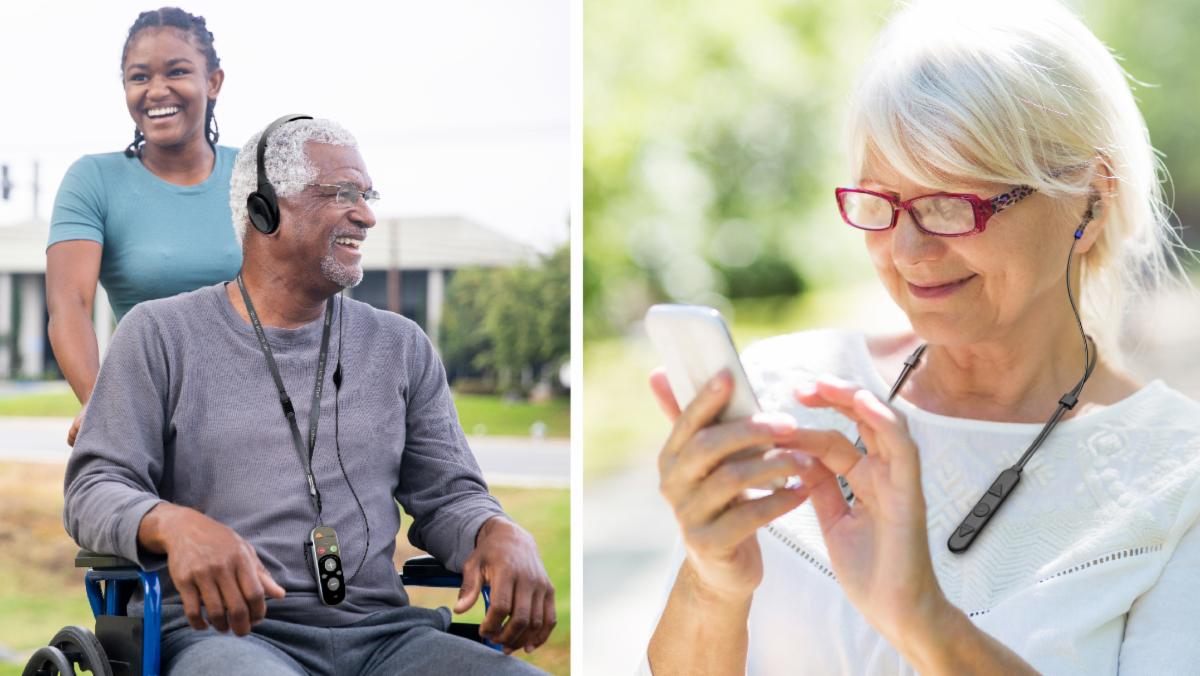August 2022 Newsletter
The FDA OTC hearing aid guidelines and BeHear

Last October, as required by the Hearing Aid Act of 2017, the FDA finally published regulations for over-the-counter (OTC) hearing aids. After a comment period and subsequent changes, the guidelines are scheduled to go into effect in mid-October. They apply to hearing aids marketed directly to consumers with mild to moderate hearing loss over the age of 18 – a group that includes about 1 in 7 American adults. Although we have never advertised BeHear hearing amplifiers as hearing aids (as they are not medical devices), the new regulations are intended to encourage people to treat their hearing loss by removing barriers to purchasing solutions and lowering prices, which are also our goals! Read the second article below to learn where we stand on the new regulations.
IN THIS NEWSLETTER:
- BeHear wins top prize in international competition
- What the FDA guidelines mean for BeHear
- How to get great sound from a flat-screen TV
One last thing before you dive into this newsletter. The next time you disagree with someone about the TV volume you should know that hearing loss is a clarity issue, not a volume issue!
The BeHear Team at Alango Technologies
BeHear wins international competition

OPPO, a leading global smart device brand, has sponsored the first OPPO Research Institute Innovation Accelerator competition, which aims to promote a better and more inclusive future based on “virtuous innovation.” Announced on August 28, the winners were selected from a total of 536 entries submitted by technology experts, entrepreneurs, and social science researchers from 39 countries and regions around the world. The ten winning teams will share the $460,000 prize fund and other resources provided by OPPO and its partners. Alango-BeHear is honored to have been recognized by OPPO and looks forward to using the program’s resources to expand access to hearing enhancement solutions, worldwide.
What the FDA guidelines mean for BeHear

Audiologists and other hearing care professionals may view the OTC ruling with alarm because it allows consumers direct access to medical devices, effectively bypassing their services. However, statistics show that the majority of Americans with mild-to-moderate hearing loss do not visit a hearing professional in the first place. The new ruling, which will encourage competition among manufacturers and reduce prices, will improve access to hearing aids and thereby place more solutions in the hands (and ears!) of those who previously would have left their hearing loss untreated.
This is the same goal we have for BeHear hearing amplifiers: to allow people with mild-to-moderate hearing loss to obtain affordable, self-fit hearing enhancement solutions. The fact that big box outlets like Best Buy and Walmart, pharmacies, and convenience stores are establishing dedicated space for hearing health is a welcome sign that the barriers to treatment of hearing loss are diminishing. We are confident that BeHear solutions, which were designed from the beginning to meet the highest standards of quality and customer service, can now reach a wider audience. You can already find BeHear ACCESS, BeHear SMARTO, and BeHear PROXY on the Best Buy online shop.
Getting great sound from a flat-screen TV

Larry Kavanaugh, a hearing health advocate who originally met the BeHear team several years back at an HLAA annual convention, recently wrote us to share his experiences using the HearLink PLUS transmitter. Larry wrote:
“I just received the HearLink PLUS from DAK. As you know, television audio is so poor on today’s flat screen models. My TV does not have Bluetooth and the only output is optical. So, the HearLink PLUS seemed like the perfect way to add fuller sound to my TV. I connected it – easily – and paired it with my portable speaker. Now I enjoy great sound!”
Larry Kavanaugh, hearing health advocate
HearLink PLUS uses either an analog or optical connection to the audio source (in this case, a flat-screen TV) to transmit sound wirelessly to a Bluetooth receiver, eliminating room reverberation and ambient noise that can degrade the listening experience. BeHear headset users get the extra benefit of having the crisp and clear TV audio personalized to suit their unique hearing profile. Get a discount when you purchase any BeHear amplifier (SMARTO, ACCESS, or PROXY) bundled with HearLink PLUS.
To get our news delivered directly to your inbox, subscribe here.